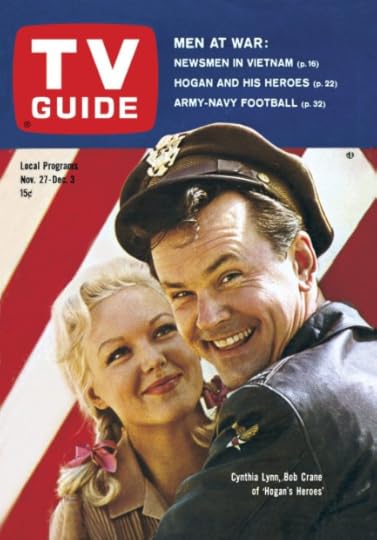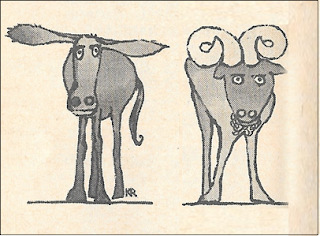This week in TV Guide: November 27, 1965
 There was, once upon a time, an era in which the biggest college football game of the year was played on the last weekend in November. It was the game between Army and Navy, played at Philadelphia Stadium, attracting well over 100,000 people each season. The teams were perennially among the best in the nation; Army won the national championship in 1944 and 1945, while Navy finished the 1963 season ranked #2, and in the twenty years between 1945 and 1965 the two schools combined to produce five Heisman Trophy winners.
There was, once upon a time, an era in which the biggest college football game of the year was played on the last weekend in November. It was the game between Army and Navy, played at Philadelphia Stadium, attracting well over 100,000 people each season. The teams were perennially among the best in the nation; Army won the national championship in 1944 and 1945, while Navy finished the 1963 season ranked #2, and in the twenty years between 1945 and 1965 the two schools combined to produce five Heisman Trophy winners.By 1965, however, things had changed. For one thing the venue in which the game was played, although it was the same stadium, was now called John F. Kennedy Memorial Stadium. For another, the two teams had started their long decline into football irrelevance. The symptoms weren't readily apparent; the 1965 teams were said to have had "disappointing" seasons (4-5 for Army; 4-4-1 for Navy, who'd lost Roger Staubach to graduation the previous year), and a crowd of 102,000 was expected, including President Lyndon B. Johnson. The teams played to a 7-7 tie.
 It seems as if we're always talking about how dramatically televised sports has changed over the years, and here's another example. Later that Saturday afternoon, CBS's NFL Countdown features live reports on the "NFL college-player draft," being held at the Summit Hotel in New York. You'll note first of all that the draft is being held in November, rather than April of the following year. It's not only before the end of the college season, it's also before the NFL season ends.
It seems as if we're always talking about how dramatically televised sports has changed over the years, and here's another example. Later that Saturday afternoon, CBS's NFL Countdown features live reports on the "NFL college-player draft," being held at the Summit Hotel in New York. You'll note first of all that the draft is being held in November, rather than April of the following year. It's not only before the end of the college season, it's also before the NFL season ends. Today, of course, the draft is a TV spectacle, with two nights of prime-time coverage on three separate networks (ESPN, NFL Network, and Fox). Draft parties are held in cities throughout the country, and TV draft experts are a cottage industry.
But that's not to say that the pro football draft in the 1960s was without drama.* For one thing, the NFL had competition from the AFL. Each league held their own draft, with the result that most of the top players were drafted by a team from each league. The battle to sign the top draft picks was fierce, and stories abounded of scouts from one league hiding players in hotel rooms under fake names, spiriting them away in the trunks of cars, and doing anything they could to keep them away from their rivals in the other league. Many college players made a ceremony of coming to terms with a professional team, often signing the contract under the goal posts after their final college game. (Some others, of course, signed before their final game, but that's another story for another time). With the increased competition came, naturally, increased salaries, which went through the roof. This ended in 1967, when as a precursor to the NFL-AFL merger the two leagues for the first time held a common draft, in which all teams took part, alternating picks. It was an end to the bidding war between the leagues, although the era of big-money contracts was here to stay.
*Not to be confused with the military draft, drama of a different kind altogether.
Published on December 01, 2018 05:00
No comments have been added yet.
It's About TV!
Insightful commentary on how classic TV shows mirrored and influenced American society, tracing the impact of iconic series on national identity, cultural change, and the challenges we face today.
- Mitchell Hadley's profile
- 5 followers



